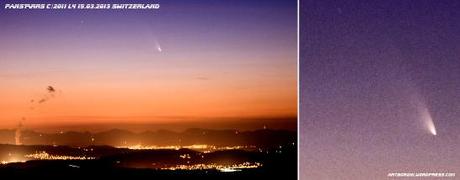
1. Location: choose a shooting place out of cities / airport areas (whatever camera you own).
2. Tripod: buy a sturdy tripod. It will be heavy, but the D800 is heavy too. You want a tripod stable whatever wind strength / terrain. I bought a Manfrotto 055XPROB (2.9 Kg!)
3. Tripod Head: choose a smooth and precise “move and shoot” head with a quick release usable also by night (i.e. easy to mount/ dismount). I chose the awesome Manfrotto 054 Q2 Head. The head can stand more Kg than the tripod, but I love how easy is to point and shoot with this supersmooth head.
4. Sensor: full frame! You own the D800 or another Full Frame camera, you’ll get as much light as you can even with fast esposure time. Fast times are preferrable to avoid airplane / star trails.
5. Zoom Lenses: as fast as the Nikon 70-200mm f/2.8G ED VR II . Open down to f/2.8 at 200mm this lens is excellent for astrophotography – unless you have > 4,000 euros to spend on other awesome prime long Nikkor lenses.
6. Manual focusing: the 70-200 VRII is sharp and fast (and heavy) and its manual focus is amazingly accurate. AF for comets and similar weak objects by night mostly fails.
7. Manual mode ISO: set ISO from 100 to 400 max. You will mostly use 100% crops and you do now want pixel noise.
8. RAW (NEF) mode: you will need to adjust at least contrast and vibrance/saturation in your pictures – avoid having only .JPEGs and take some time to correct later home your awesome pictures in LIght Room or similar programs
9. In camera auto corrections: I switched all off: vignetting, AWB, High ISO noise reduction. Anway, they will not affect your RAW files.
10. Vibration reductions: set on the lens stabilizer (on VR lenses) and use Mirror UP shooting mode. A remote control or a count down of a few secs can be also helpful.
11. Take as many pictures as you can. Manual focusing adjustments and vibrations and trails from other flying objects will be your enemy number one.
Filed under: astrophotography, photo lessons artborghi, photography of night, photography of sky Tagged: artborghi astrophotography d800, d800 panstarrs, lorenzo borghi panstarrs, nikon D800, panstarrs 70-200 VRII, Zoom lens

